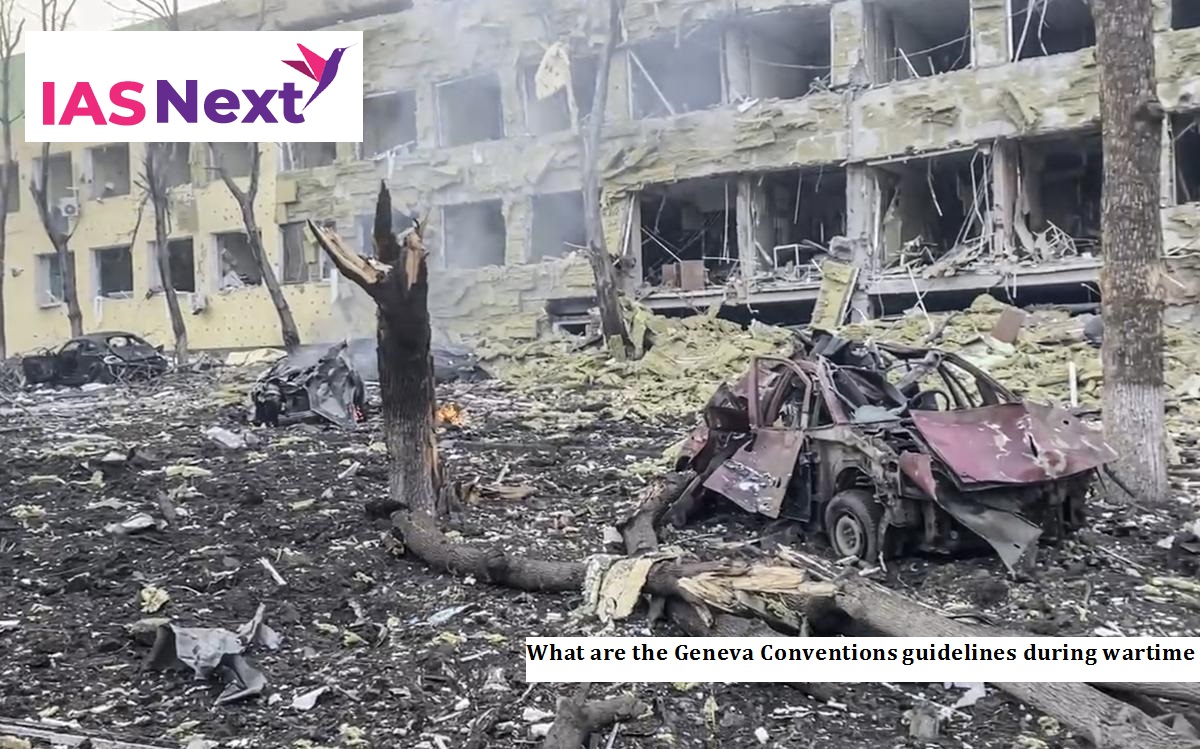CURRENT AFFAIRS
Get the most updated and recent current affair content on Padhaikaro.com
What are the Geneva Conventions guidelines during wartime?
- IAS NEXT, Lucknow
- 15, Mar 2022

Reference News:-
Russia’s armed invasion of Ukraine starting February 24 has set off a steady escalation in hostilities on Ukrainian soil, and in many cases civilian infrastructure and non-combatants have been impacted.
- There is growing concern surrounding the issue of human rights violations.
What next?
As the evidence of casualties in the civilian population continues to mount, the world will increasingly look to the Geneva Conventions for standards to which the invading Russian forces can be held.
- Ultimately, if there is a compelling case for prosecuting combatants for war crimes, crimes against humanity, genocide, and the crime of aggression, it is not inconceivable that evidence would be collected for an investigation and trial at the International Criminal Court (ICC).
What are they?
The Geneva Conventions is a body of Public International Law, also known as the Humanitarian Law of Armed Conflicts, whose purpose is to provide minimum protections, standards of humane treatment, and fundamental guarantees of respect to individuals who become victims of armed conflicts.
Importance of Geneva Conventions in today’s world of uncertainty:
The Geneva Convention reminds us to look at the individual even in spaces such as war between nations.
- The agreement set down the rules for the treatment of prisoners taken in a war situation, explicitly putting down that prisoners of war (POWs) would be prisoners of the Power which holds them, and not of the unit that had captured them; and that they must be treated with honour, and allowed to live in humane conditions.
- The protocol also established that prisoners of war need only truthfully give their names and ranks, and that they cannot be coerced to reveal other details about themselves or the operations they have been involved in.
- All these caveats are to establish the individual as the linchpin of humanity.
The Geneva Conventions that originally only addressed the treatment of combatants was later expanded to include non-combatants and civilians as well.
Monitoring:
The Geneva Conventions have a system of “Protecting Powers” who ensure that the provisions of the conventions are being followed by the parties in a conflict. In theory, each side must designate states that are not party to the conflict as their “Protecting Powers”. In practice, the International Committee of the Red Cross usually plays this role.
Which countries are signatories?
The Geneva Conventions have been ratified by 196 states, including all UN member states.
- The four conventions and first two protocols of the Geneva Conventions were ratified by the Soviet Union, not Russia, hence there is a risk of the Russian government of the day disavowing any responsibility under the Conventions in toto.